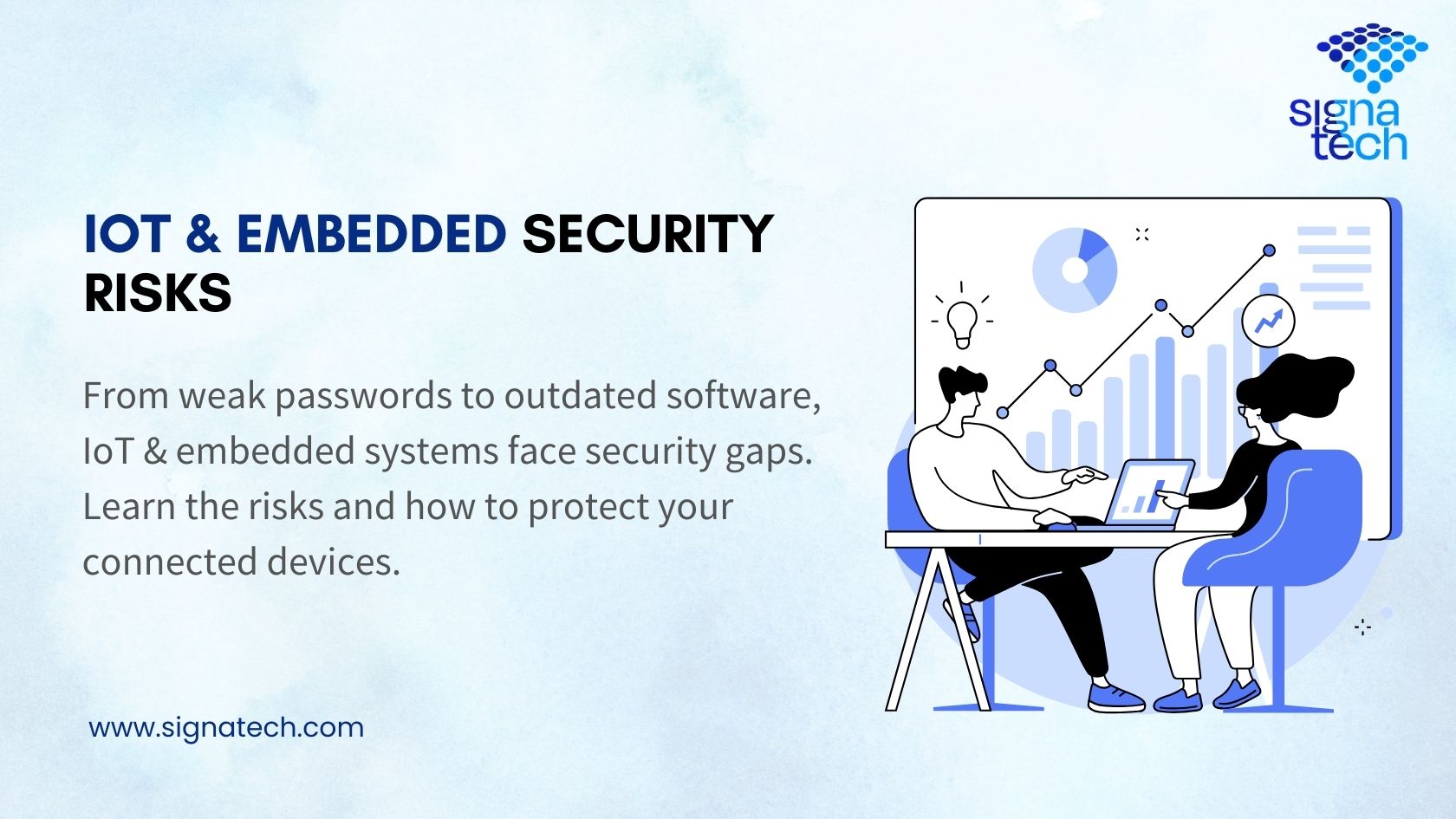During this era, the Internet of Things and embedded systems will revolutionize many fields and bring convenience, efficiency, and innovation. However, this wonderful innovation will come with a rather unmanageable set of security challenges that must be addressed to protect sensitive data and ensure the safe operation of such devices. This blog will explore the key IOT security challenges and embedded systems and the mechanisms to mitigate these risks.
Understanding IoT Security Challenges
Therefore, the IoT security challenge is multifaceted and includes problems related to device vulnerabilities, network security, and data protection. These are quite urgent problems, considering the ever-growing number of connected devices and the increasing attack surface, and they should be addressed comprehensively.
Device Vulnerabilities
The most serious security surprises regarding IoT Security Challenges come from the weaknesses built into the devices. Most IoT devices take little security into account and, as such, are made simple to hack. Therefore, unauthorized access, data breaches, and an attacker’s control over the device are dangers for embedded systems.
Network Security Threats
Another critical area of concern for IoT is network security. As most IoT devices are interconnected through wireless communication, potential attackers may intercept and misuse this. Secure communication channels and data protection must be implemented to avoid unauthorized access and leakages.
Data Protection and Privacy Concerns
Soon enough, the large amount of data IoT devices generate makes privacy a concern. Improper access to such sensitive information can lead to identity theft, financial loss, and loss of reputation. Hence, robust data encryption should be implemented in the embedded systems.
Strategies to Address IoT Security Challenges
Proper security protocols, constant monitoring, and frequent updating are necessary to mitigate security issues related to the IoT. Here are some possible key strategies to enhance the security of IoT and embedded systems:
Implement Strong Security Protocols
Strong security protocols for embedded systems should start with protecting the data itself. This includes encryption, securing boot processes, and ensuring that only authenticated users can access devices.
Regular Firmware Updates
Another one is updating firmware, which contributes significantly to repairing security in IoT devices. It helps patch known and newly discovered vulnerabilities, thus improving device security overall. Automated updating mechanisms could ensure that devices stay shielded over time, addressing one of the IoT security challenges.
Network Segmentation
Segmenting IoT devices from all other network components reduces the impact that a security breach can cause. Once these devices are isolated, the attacker cannot reach a company’s critical systems and data through their device.
Authentication and Access Control
Effective authentication approaches will prevent unauthorized access to the Internet of Things. Multi-factor authentication and strong password policies secure a device; only authorized users should be allowed to interact with it.
The Role of Secure IoT Architecture
A secure IoT architecture design is the most important aspect to ensure the lowest possible existence of IOT Security Challenges. This should be ensured by factoring in security at every stage of the device lifecycle, from design and development to deployment and maintenance. Some key components of a secure mechanism in IoT system architecture are :
- End-to-end Encryption: The data is encrypted before it leaves the device, and then it stays encrypted when stored on cloud services or transferred on the web.
- Regular Security Assessments: Regular assessments may aid in identifying and mitigating any potential vulnerability.
- Ensuring proper security standards: adhering to the best practices for securing the IoT applied in the industry by other companies.
Addressing Embedded Software Security
- Embedded Software Security: This is one of the most important parameters that help protect IoT devices. One knows that the software running in the IoT device is secure, thus preventing the most common attacks. Key practices would include:
- Code review and testing: The application code should be periodically reviewed to identify and remove vulnerabilities.
- It provides for security features to be considered in the software design process within an early stage.
- Intrusion Detection Systems: Implement systems that detect and respond to potential security threats in real time.
Risk Management in IoT
Effective risk management is essential for addressing security challenges posed by IoT and embedded technologies. It involves considering the probable risks and their impacts, then designing and applying mitigation measures. Key elements of risk management for IoT include:
- Threat modeling: identification of various threats and potential vulnerabilities against IoT devices.
- Incident Response Plans: Develop and test incident response plans to ensure real-time response to security incidents.
- Continuous Monitoring: Measures the implementation of solutions for continuous monitoring that can effectively expire or retard security threats in real time.
This security-related challenge for IoT and embedded systems will be high, but it may be manageable. Revisiting a holistic approach toward security, using strong security protocols, frequent firmware updating, network segmentation, and an architecture secure by design can greatly enhance the safe state of IoT devices in any organization.
It becomes critical to catch up with emerging threats and redesign security controls for them. At Signa Tech, we offer solutions to help organizations manage IoT and embedded systems. Contact us for more information about how to make your devices and embedded systems secure.
